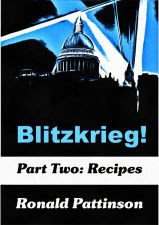When I'm in archives, I don't spend a huge amount of time analysing documents. There's plenty of time for that later. I just snap away, making sure I take as many photos as possible.
I snapped 29 documents described as brewing books. More than enough material, surely? Well, it's not quite as simple as that.
The good news, is that there were records from more than the two breweries, Fremlin and George Beer & Rigden, that were in my original plan. There was a single brewing book each from two breweries owned by Tomson & Wotton. Both from 1893. And much of the two books in the same handwriting. They also contain most everything I'm interested in and are easy to read..
Not such good news with George Beer & Rigden. Of the twelve documents I photographed, only five are really brewing records. The others are gyle books, which only list the ingredients. Nothing about processes. On the other hand, the actual brewing records are very good, containing all the information I usually plug into my spreadsheet. Unfortunately, only one is for the period I'm interested in, 1880 to 1914.
What about Fremlin? I photographed fourteen volumes. On the upside, all but one are really brewing books. Only the last one, from 1970, is a gyle book. They aren't as complete as the Beer & Rigden records. They really are just brewing books, with no details of the fermentation at all. But it gets worse.
 |
| Part of a Fremlin brewing record. |
The first five brewing books are in code. And not just the mashing temperatures, which I've seen before. All the numbers are in code. Even the boil time and the gravity. Fucking magic. It makes them just about unusable. Fortunately, the other records are all uncoded. Including three covering 1880 to 1914. If I'm lucky, I'll be able to use those to decode the others. But it will take a load of work.
Overall, less useful stuff than I'd hoped for. But plenty to be getting on with. And probably 40 to 50 recipes for the book. Which was what I was really after.










































































4 comments:
I wonder if you could throw a few tables into ChatGPT or something and have it figure out the coding scheme? It might save some time, and that time could be spent drinking a pint or two. :)
I'm really curious about the reasons for coding. Was it driven by fear of rivals stealing trade secrets, or something else? How common was the practice?
Coding mash temperatures seems odd to me because it seems like the kind of thing regular brewery workers would know, but I could easily be mistaken. And I'm not clear why simply locking up the records wasn't enough.
I do wonder what the excise men made of these coded brewing records. How was it allowed?
Probably never envisaged that the brewery would close some day.
Oscar
Post a Comment